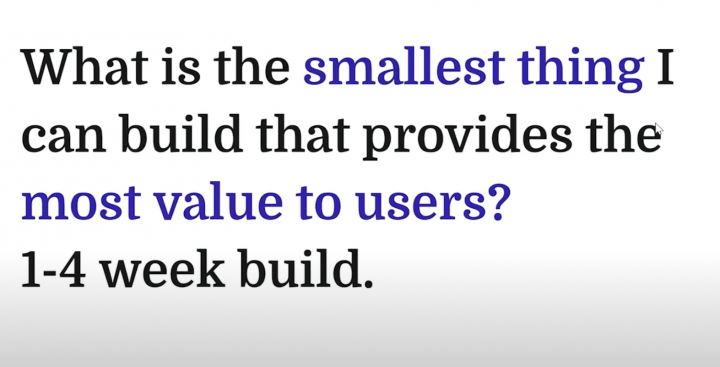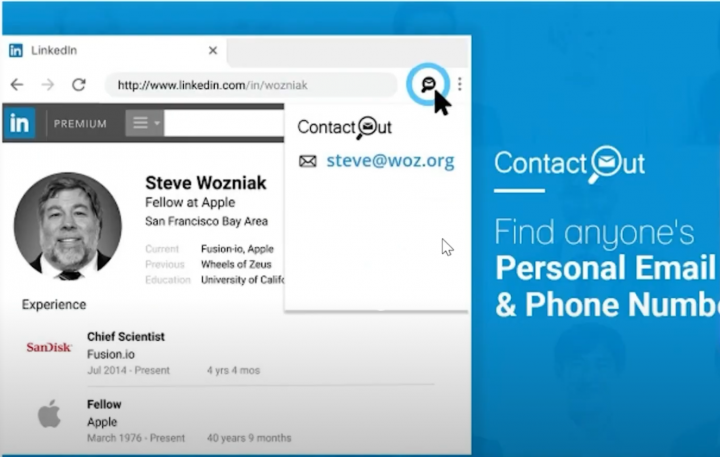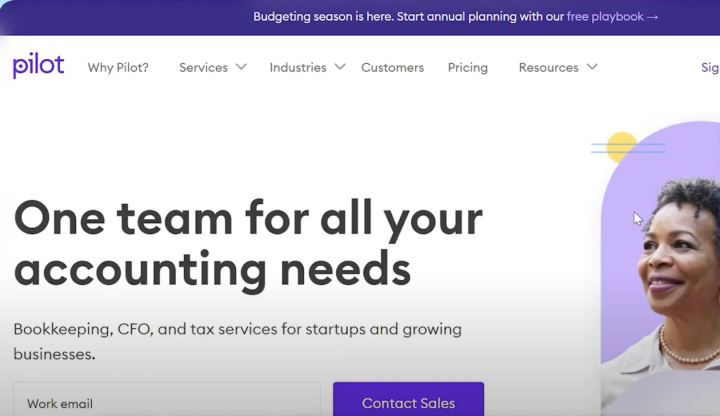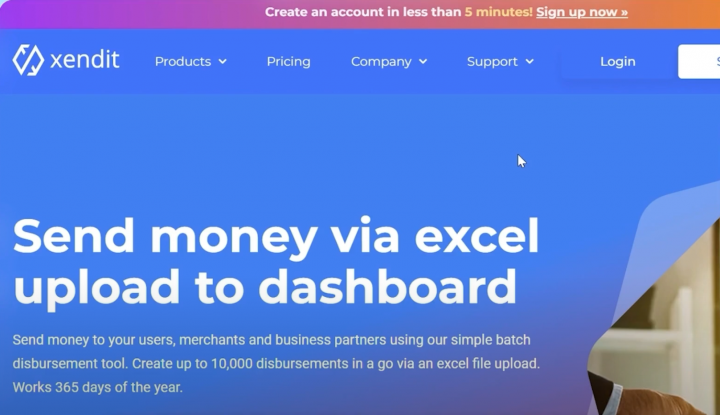Building product in the leanest way possible
So for our first product, we want to ask ourselves:
What is the smallest thing that I can build that provides the most value to users?
And ideally is buildable within one to four weeks.

If it takes longer than four weeks, we want to break it down into smaller chunks,
or we want to be very, very sure that we’ve proven demand enough to warrant the extra time investment.
With ContactOut, we have a lot of features on our prospecting platform, like a search portal, email campaign tool, a chrome extension for LinkedIn.



But the first version was simply a popup on top of LinkedIn that gave you an email address.

We did spend a lot of time building out email database. However, in hindsight, that was a mistake.
What we should have done is go to all our competitors get all the email data and aggregate it, and then on-sell it to customers, which is something that we could have done in two to four weeks.
L et’s look at how some other companies developed the minimum viable product:
the smallest thing that they can build in under four weeks that provides the most value to uses.

One quick approach is to start by manually providing the service before automating it.
Pilot is the biggest startup accounting firm in the US. However they started with one co-founder manually doing the book keeping.

From there they learnt about where the inefficiencies were in the accounting process.
And also what the customers wanted and what providing excellent service looks like.
The other co-founder was busy studying APIs to automate QuickBooks, Xero and other accounting software
and then figuring out how to use code to automate and improve the efficiency of the accounting process.
Xendit is a payment distribution service where companies can pay the suppliers and business partners in one go by uploading a spreadsheet.

They also started manually, with people processing payments by hand across hundreds of bank accounts.
This way they could start to provide the service immediately to validate demand.
At the same time they were building a system that would integrate with all the banks and automate payments.
Then there’s ZoomInfo, which is a prospecting platform and one of my competitors.

Building a search portal for prospects where you can search by job title, company size technologies used lots of other filters takes a long time and a lot of data processing.
Instead of ZoomInfo for started by manually selling lists of prospects.
For example, customers will provide details like:
I want a VP of engineering in California that has experience in big data,
then ZoomInfo for would manually go and compiled this list, and sell the data to the customer in a spreadsheet.















